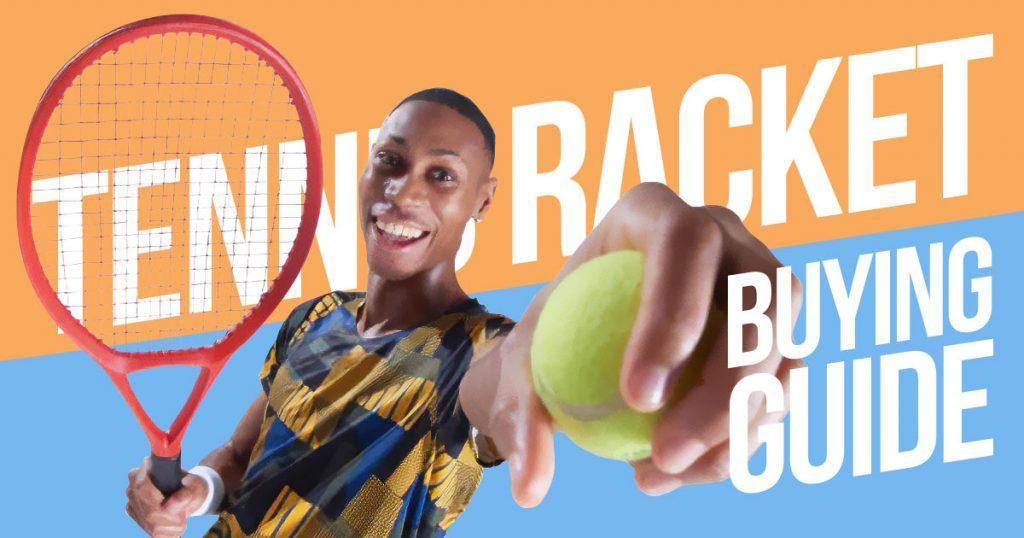Tennis is a fun and exciting sport that offers many benefits for your body and mind. Playing tennis can greatly improve your heart health, coordination, and overall fitness. According to a study in the British Journal of Sports Medicine, playing racquet sports like tennis can lower the risk of heart disease by up to 56%. Because it combines both aerobic and anaerobic exercise, tennis is a great choice for anyone looking to stay healthy and fit.
If you’re ready to start playing tennis, getting a good tennis racket is very important. Unlike other sports where equipment might all be the same size or weight, choosing a tennis racket depends on your personal preferences and playing style. The right racket can have a big impact on how well you play and how much you enjoy the game.
What is a Tennis Racket?
A tennis racket is the main tool you need to play tennis. It has a frame with a handle and strings stretched across a round or oval head. You use it to hit the tennis ball over the net and into your opponent’s court.
Does the racket you need depend on you?
Yes, the racket you need really depends on you. Different players need different rackets based on several factors. Here are some things to think about when choosing a racket:
1. Skill Level
- Beginners: Usually do better with rackets that have larger heads and are lighter, making it easier to hit the ball.
- Intermediate and Advanced Players: Might want rackets that give more control and precision, which often means smaller heads and a bit more weight.
2. Playing Style
- Baseline Players: If you stay at the back of the court and hit powerful shots, you might like heavier rackets with larger heads for more power.
- Serve-and-Volley Players: If you often move to the net, you might prefer lighter rackets that are easy to maneuver quickly.
3. Physical Strength
- Stronger Players: Can handle heavier rackets, which provide more stability and power.
- Players with Less Strength: Might choose lighter rackets that are easier to swing and less tiring to use.
4. Personal Preferences
- The feel and comfort of a racket are very personal. Trying out different rackets can help you find the one that feels best.
5. Head Size
- Larger heads give a bigger sweet spot and more power, making them forgiving on off-center hits.
- Smaller heads offer more control and are popular with advanced players.
6. Weight
- Heavier rackets provide more power and stability but need more strength to swing.
- Lighter rackets are easier to maneuver and can help create faster strokes.
7. Balance
- Head-heavy rackets give more power and stability.
- Head-light rackets are easier to control and less tiring to use.
8. String Pattern
- Open-string patterns (fewer strings) allow more spin and power.
- Closed string patterns (more strings) offer better control and last longer.
How to Know What Racket is Best for You
Choosing the right tennis racket involves considering your unique needs and preferences. Here are several ways to determine which racket might be best for you:
1. Assess Your Skill Level
For beginners, look for rackets with larger head sizes and lighter weights to make hitting the ball easier. Intermediate players should opt for rackets that offer a balance of power and control, typically with mid-sized heads. Advanced players should seek rackets that provide precision and control, often with smaller head sizes and heavier weights.
2. Understand Your Playing Style
If you play primarily from the back of the court (baseline player), choose a heavier racket with a larger head for added power. If you frequently approach the net (serve-and-volley player), opt for a lighter, more maneuverable racket to react quickly.
3. Consider Your Physical Strength
Stronger players can manage heavier rackets, which provide more stability and power. Players with less strength might prefer lighter rackets that are easier to swing and less tiring.
4. Personal Comfort and Feel
Testing different rackets can help you find the one that feels most comfortable in your hand. Additionally, ensure the grip size is comfortable to avoid slipping and improve control.
5. Check Head Size
Larger heads offer a bigger sweet spot and more power, making them forgiving on off-center hits. Smaller heads provide better control and are usually preferred by advanced players.
6. Evaluate Weight
Heavier rackets give more power and stability but require more strength to swing. Lighter rackets are easier to maneuver and can help generate faster strokes.
7. Balance Preference
Head-heavy rackets provide extra power and stability, while head-light rackets are more maneuverable and less tiring to use.
8. String Pattern
Open-string patterns allow for more spin and power. Closed string patterns offer better control and tend to be more durable.
Benefits of Using the Right Tennis Racket
Using the right tennis racket can greatly improve your game. It helps you hit the ball more accurately and powerfully, leading to better performance. A well-chosen racket can also reduce the risk of injuries to your wrist, elbow, and shoulder by fitting your needs perfectly. When your racket feels comfortable, you can play longer without getting tired.
Additionally, the right racket can improve your control and add spin to your shots, giving you an edge over your opponents. Having the proper equipment boosts your confidence, allowing you to focus on your game rather than worrying about your gear. A racket that matches your playing style helps you play to your strengths and improve your weaknesses, resulting in more consistent play with fewer mishits.
Overall, using the right tennis racket not only enhances your performance but also makes playing tennis more enjoyable and rewarding.
